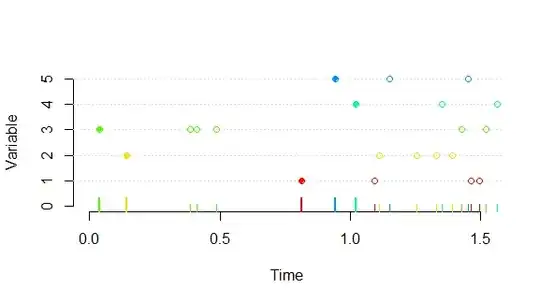As explained at The Number of Exponential Summands in a Fixed Interval is Poisson, each of the variables $X_i$ is the waiting time for the first point to appear in a Poisson process of rate $\lambda$ starting at time $\mu$. It is obvious from the characteristic properties of a Poisson process that a union of Poisson processes of rates $\lambda_1, \lambda_2, \ldots, \lambda_n$ is just a Poisson process of rate $\lambda_1+\lambda_2+\cdots+\lambda_n$, equal to $n\lambda$ in this case. Therefore the expected waiting time to the first point among them all must be $1/(n\lambda)$.
After the first time $X_{(1)}$ is encountered, there remain samples from the $n-1$ other processes. Since they are all independent, and the chance of new points appearing is independent of any previous points that have appeared, it's the same situation all over again: the starting time is now $X_{(1)}$ instead of $\mu$ and $n$ has decreased to $n-1$, that's all. Consequently the expected time to wait for the next point, which is $X_{(2)}-X_{(1)}$, is $1/(\lambda(n-1))$.
(And so it continues: the expectation of $X_{(j+1)}-X_{(j)}$ is $1/(\lambda(n-j))$ for $j=1, 2, ..., n-1$.)

In this figure a realization of a Poisson process of rate $\lambda=2$ is shown for each of $n=5$ independent variables indexed $1$ through $5$. The union of the points is plotted with ticks at the bottom: they form a realization of a Poisson process of rate $n\lambda=10$. The first points in each process are highlighted with solid dots (and shown with longer ticks at the bottom): these form the sample $(X_1, X_2, \ldots, X_n)$; all the hollow dots are superfluous but are shown to illustrate the concepts. The expected time to wait for the very first point overall is $1/(n\lambda)=1/10$ because the combined rate is $n\lambda$. After it is encountered, four processes remain. Thus, their combined rate is $(n-1)\lambda=8$ and the expected waiting time to the first point among them is $1/((n-1)\lambda)=1/8$.
